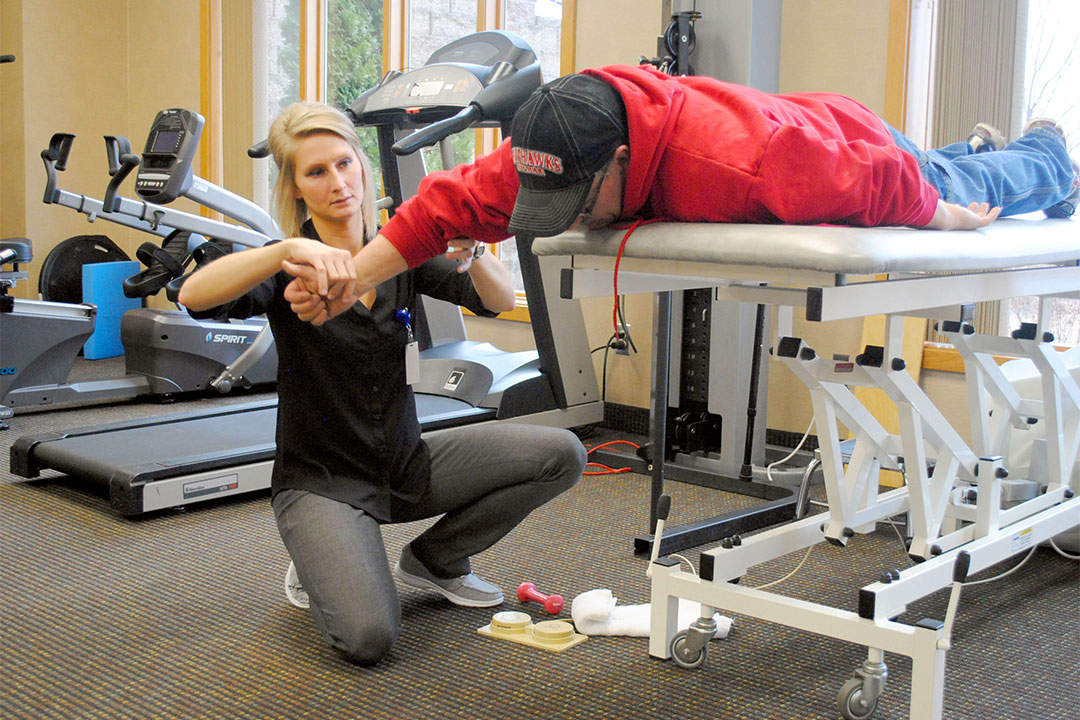Orthopedics and physical therapy: A winning team
Orthopedic surgeons are doctors who specialize in treating injuries and deformities of the skeletal and muscular system. This includes bones, muscles, joints, ligaments, cartilage and tendons.
Physical therapists specialize in treating conditions or injuries that limit a person's ability to move and do physical activities. They use a variety of methods to help strengthen muscles, relieve pain, and improve mobility.
Together, Orthopedic surgeons and physical therapists play an integral role in developing an orthopedic patient's overall recovery plan.
Preventing surgery
As a first step, an orthopedic surgeon will often refer a patient who is suffering from chronic pain or a musculoskeletal injury to a physical therapist to begin treatment. The goal is to relieve pain and restore function without the need for surgery.
A physical therapist will perform a variety of tests, observations, and measurements to determine the exact nature of the injury or condition. These may include range of motion, strength, balance, gait and posture. Once the problem has been better defined, the physical therapist will develop a treatment plan that usually involves exercise, hands-on manipulation, and methods for reducing pain and inflammation.
A physical therapist looks for problems that may contribute to a patient's pain or discomfort. For example, a patient's knee or back pain may actually be the result of overcompensating for weak or misaligned hips. By strengthening the hips, patients can correct their faulty movement patterns and often prevent surgery altogether.
Preparing for surgery
An orthopedic surgeon may also work with a physical therapist to prepare a patient for surgery. In this case, the goal is to improve flexibility and build strength ahead of time to facilitate an easier recovery for the patient and, ultimately, a better outcome.
For example, a patient who is anticipating an upcoming knee replacement may see a physical therapist for "pre-habilitation" to increase strength, flexibility, and stamina. Not only does this prepare the patient for the rigors of post-operative rehabilitation, it often speeds up recovery time and reduces muscle pain.
Recovery from surgery
Following surgery, the orthopedic surgeon and physical therapist will work together to develop a treatment plan that helps speed recovery and effectively manage pain. An immediate concern is to prevent the build-up of scar tissue surrounding the surgical site. Once this tissue starts to form, it can cause pain, tightness, and limited range of motion. The physical therapist will manually stretch tight muscles and joints to prevent scar tissue build-up and maintain flexibility.
There may also be an educational component to the rehabilitation process that involves learning how to use assistive devices, such as a walker, knee scooter, or crutches. Falls are a high risk for post-surgical patients, especially the elderly, so it's important that assistive devices are properly fitted, and that patients know how to use them safely.
Ultimately, the goal of both the orthopedic surgeon and the physical therapist is to return the patient to an active and pain-free lifestyle. By working together and taking a team approach to recovery, it's the patient who scores the biggest win.
